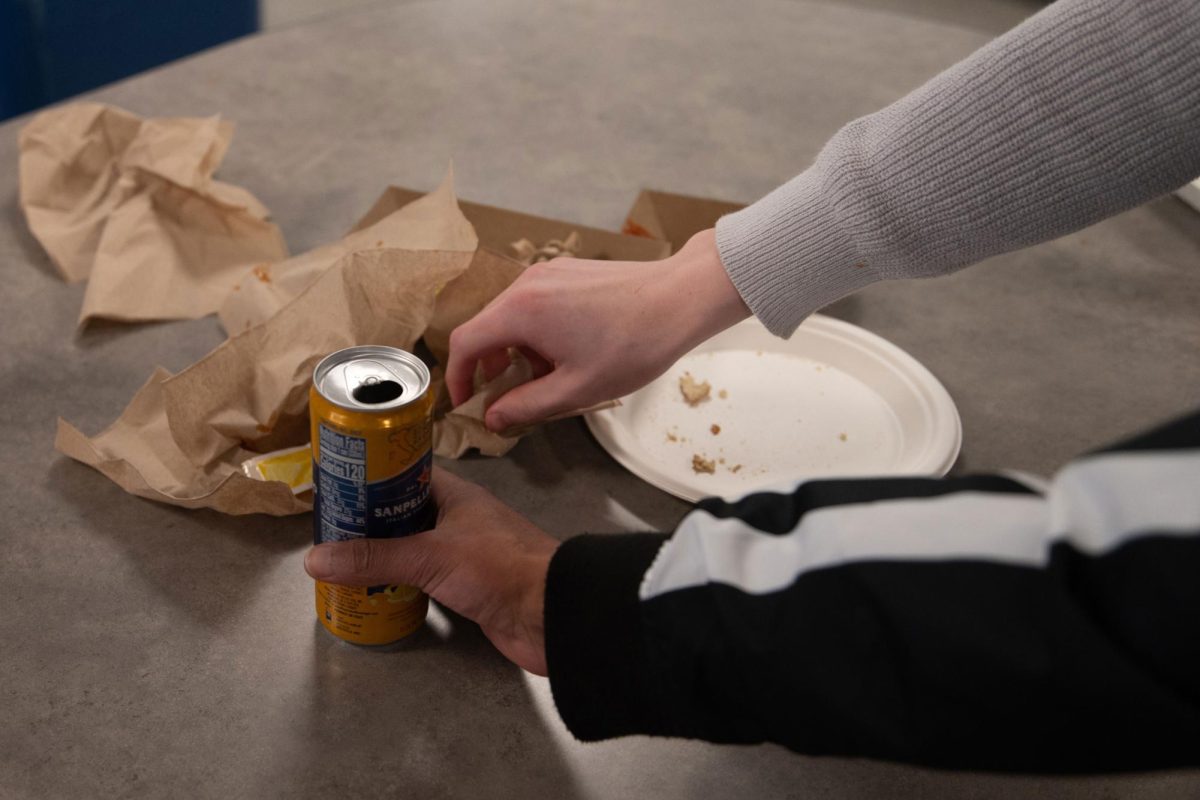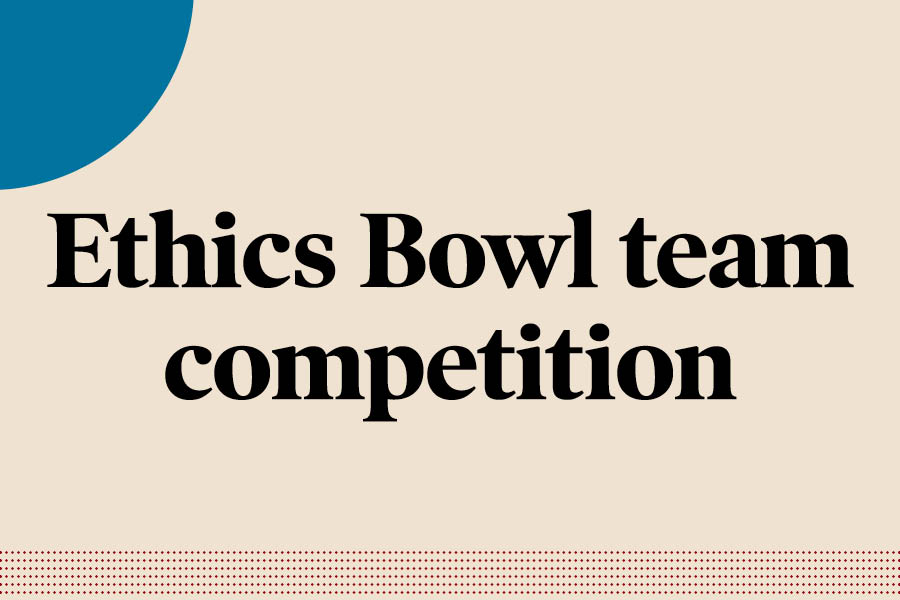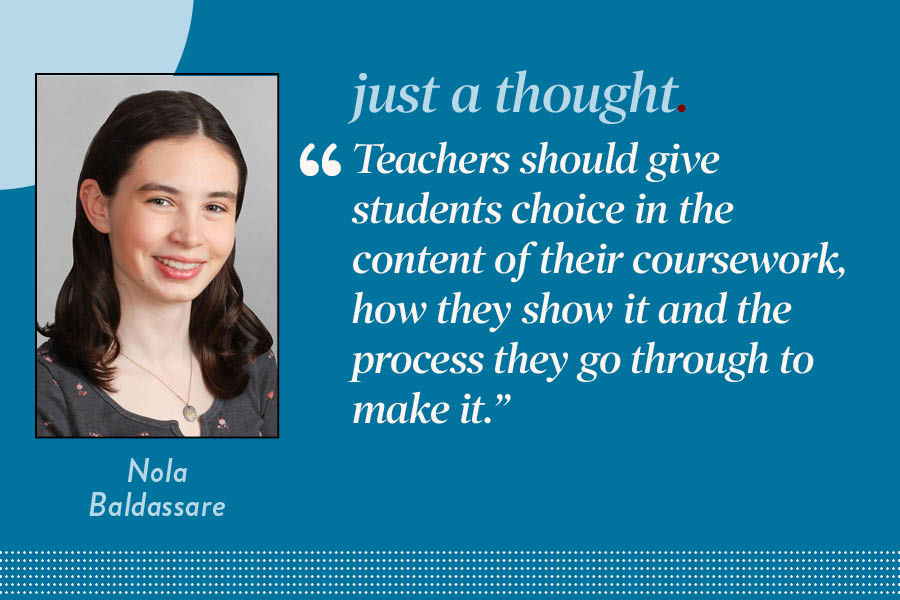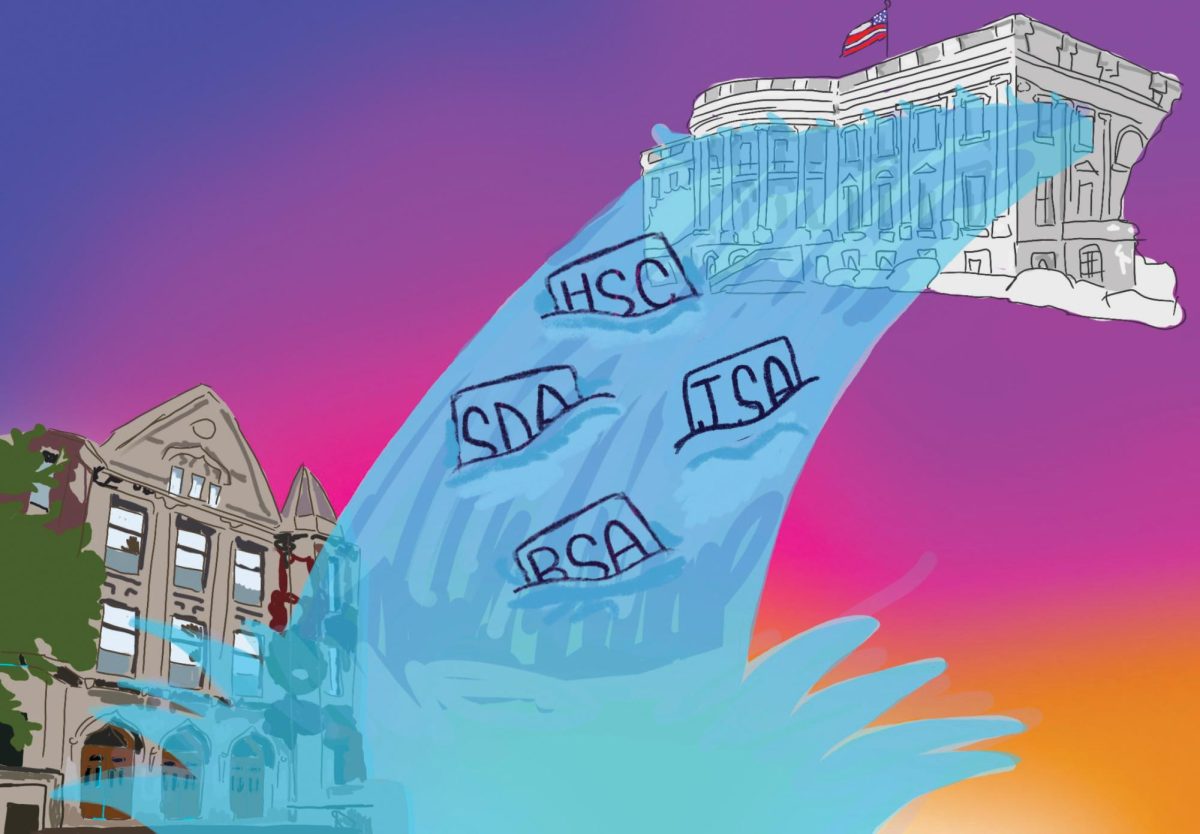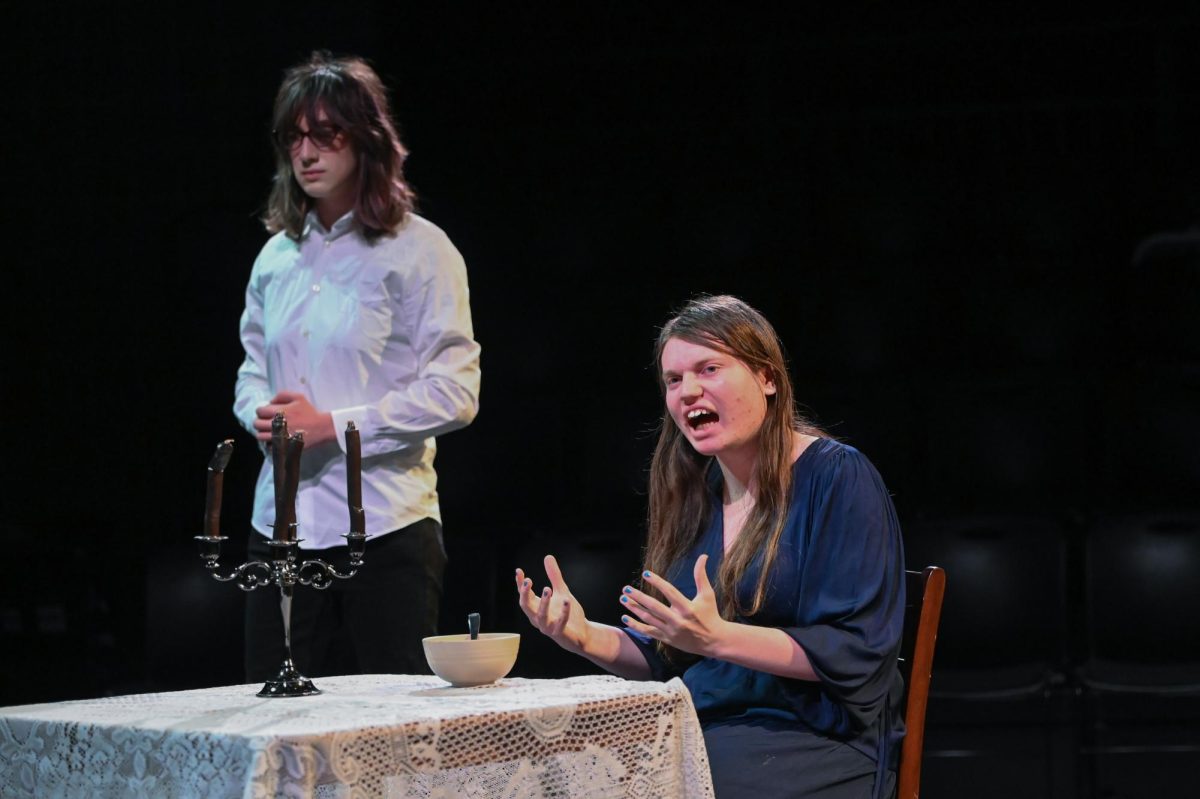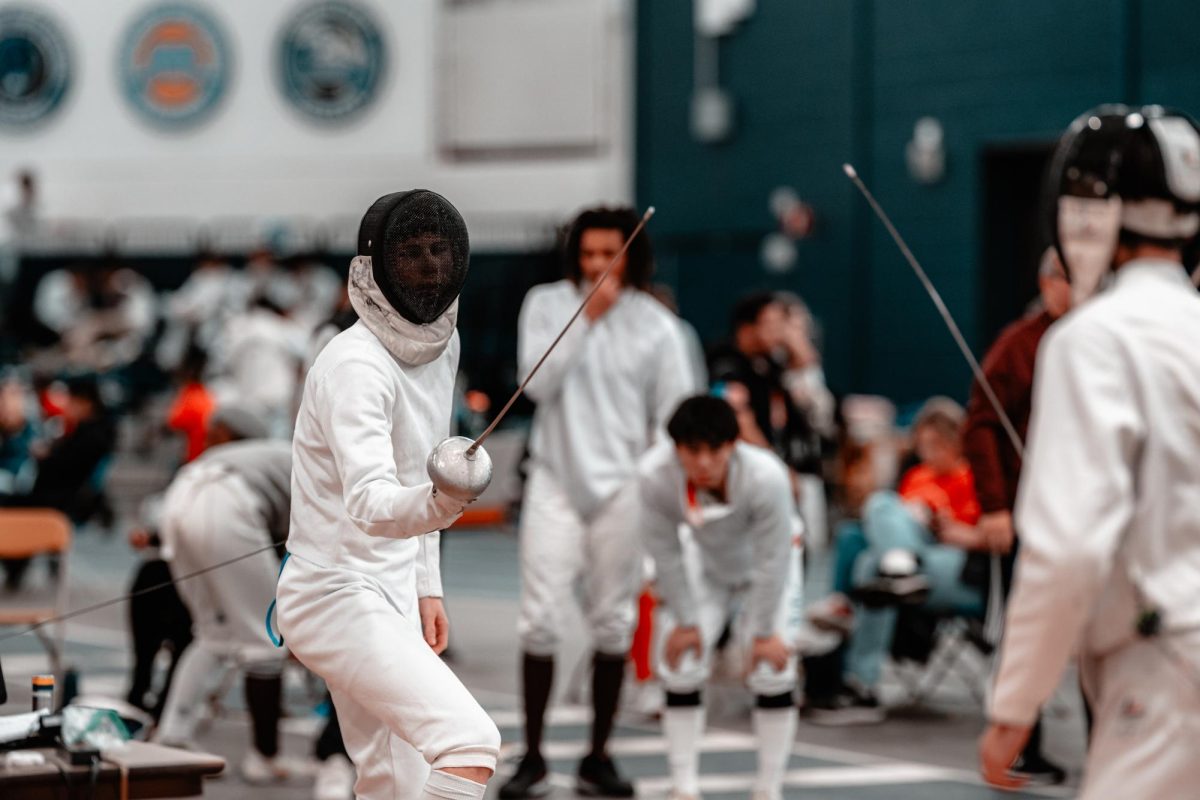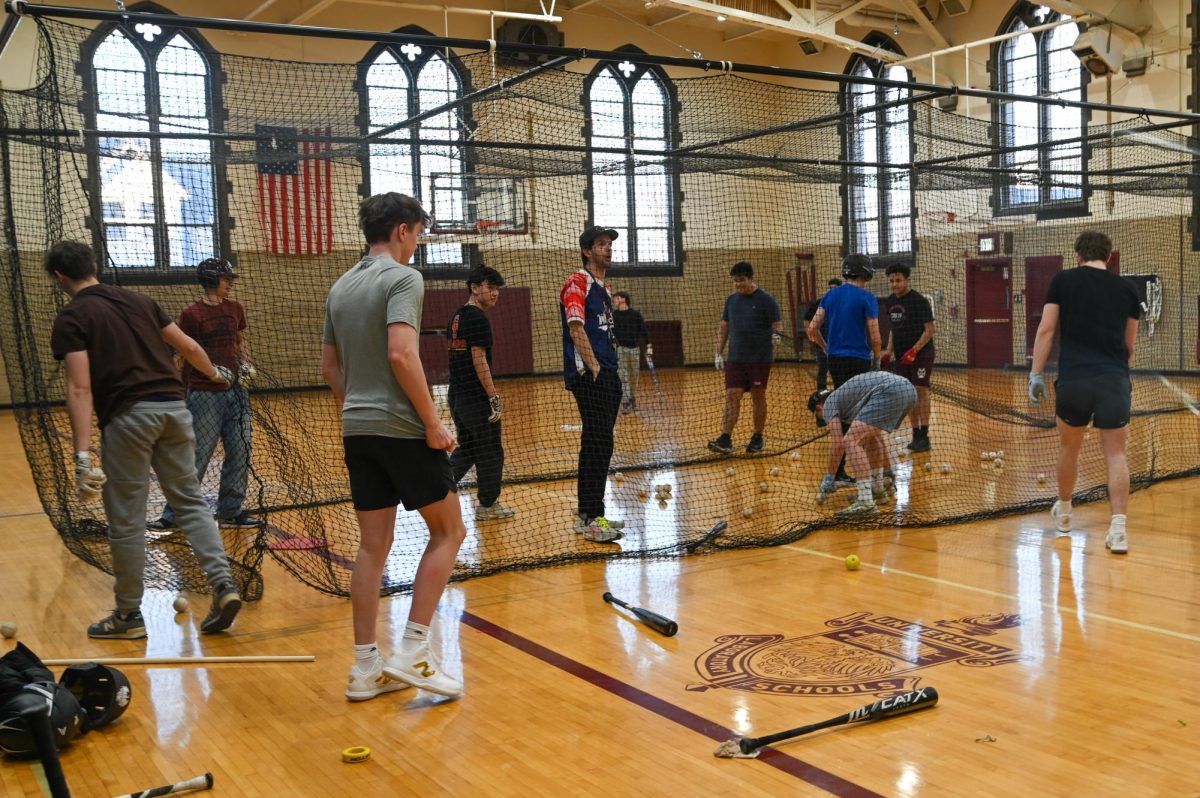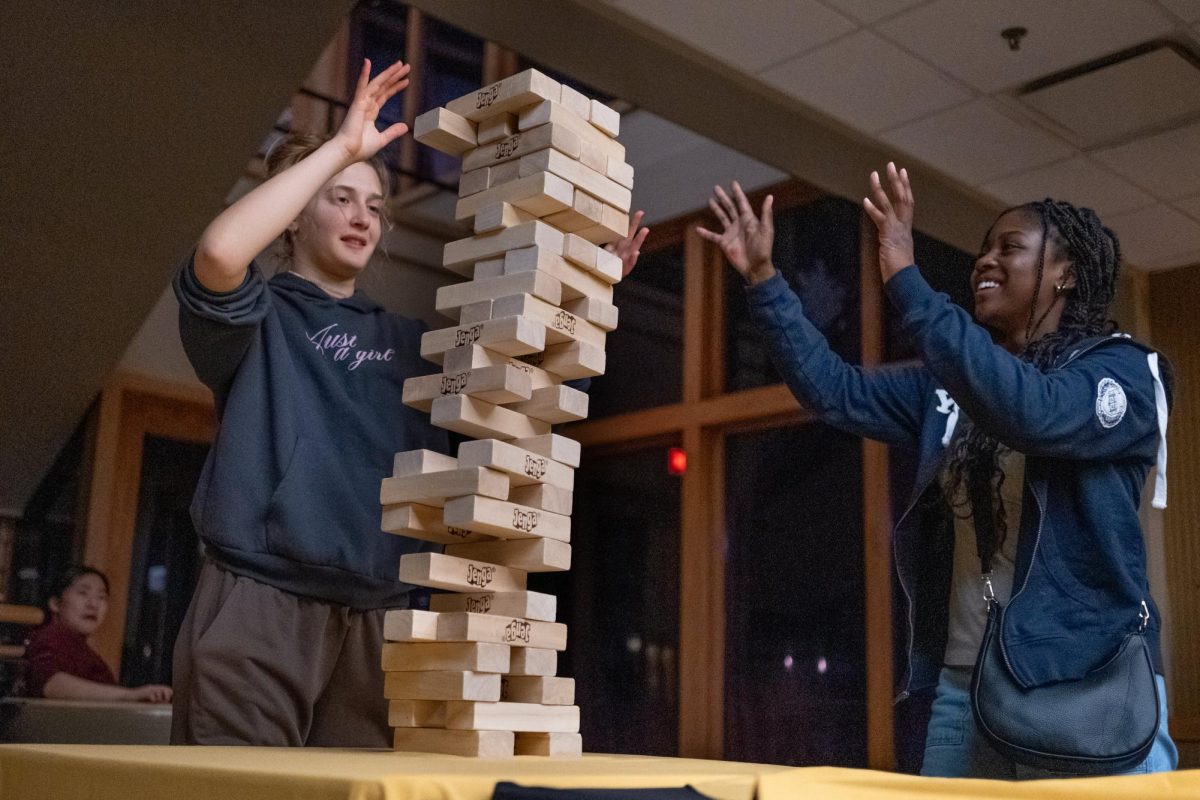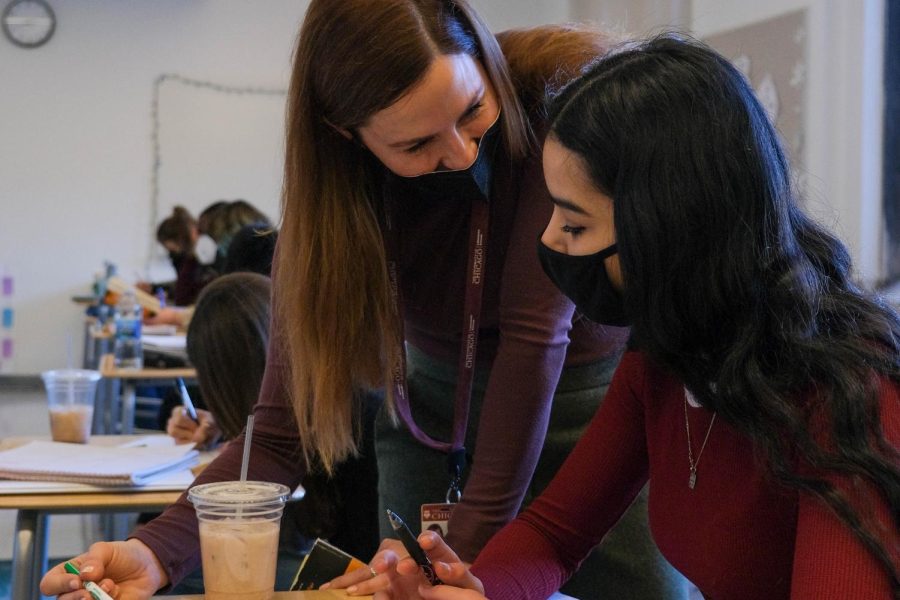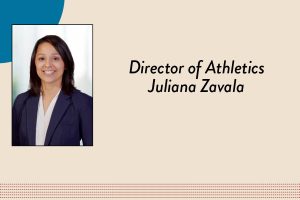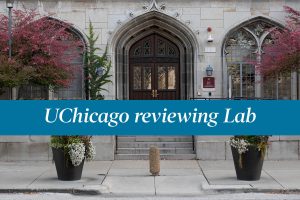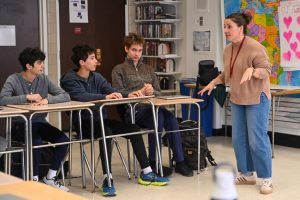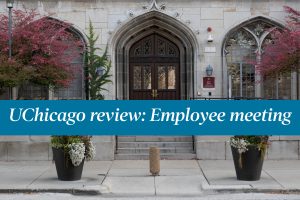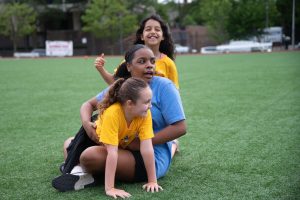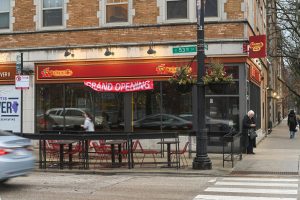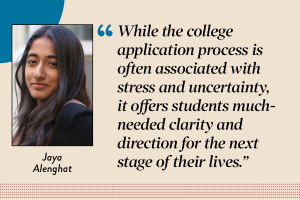Student mask usage increases after omicron spike
English teacher Christine Himmelfarb and senior Ariana Vazquez, both wearing black masks, conference during class.
January 28, 2022
A teacher stands solemnly at the front of the class after a week of schoolwide baseline COVID-19 SHIELD testing delayed the resumption of classes after winter break. He faces his now socially distanced students in their newly spaced out desks, as he notifies them of updated safety guidelines and the need to remain masked in class. KN-95s populate the sea of faces, every single nose bridge covered. Prior to winter break, such a scene was rare.
These types of conversations not only informed students about new COVID-19 guidance to reduce virus spread, but also detailed reinforcement techniques that had been largely missing prior to the more infectious omicron variant.
With COVID-19 cases skyrocketing around the United States and world, proper mask use at U-High has increased among students but has not yet become universal, despite the new guidelines put in place.
Since returning to school from winter break, ninth grader Helen Kraemer noticed a shift in mask wearing around the school. She observed more students opting to wear KN-95s and was surprised and a little relieved to see more people correctly wearing their masks.
“I’ve only seen a few people not wearing their masks now, and everyone is much more COVID-conscious and helping to have a more safe environment,” Helen said.
When eating in Gordon Parks Arts Hall during lunch, Helen observed teachers approach a group of students to remind them of the school measures to remain six feet apart while eating.
“It makes me feel more comfortable when teachers take those measures that students are taking just a step further,” Helen said.
Like Helen, ninth grader Tejah Rana said that a primary factor contributing to this shift is the reinforcement from administration and faculty that has worked efficiently to remind students of the new rules, particularly at lunch. However, Tejah said she still has to remind people to follow the masking rules.
“It’s very easy to forget, and I still have had to remind people, but it’s definitely less frequent than before this new variant,” Tejah said.
Although Tejah said she has noticed an improvement in mask use, she also acknowledged that those outlying moments when students do not wear their masks are still noticeable and recurring.
P.E. teacher Pete Miller agrees that there has been a shift. Prior to winter break, he said mask compliance was consistently around 85% among his students across the five classes he teaches. Now, he said that percentage is much closer to 100%, a change he credits to more students realizing the seriousness of the new variant.
Despite the clarity of the new guidelines and their reinforcement soon after the return to school, teachers and students alike face uncertainty as to how class and school will continue to change as the pandemic enters another year.





